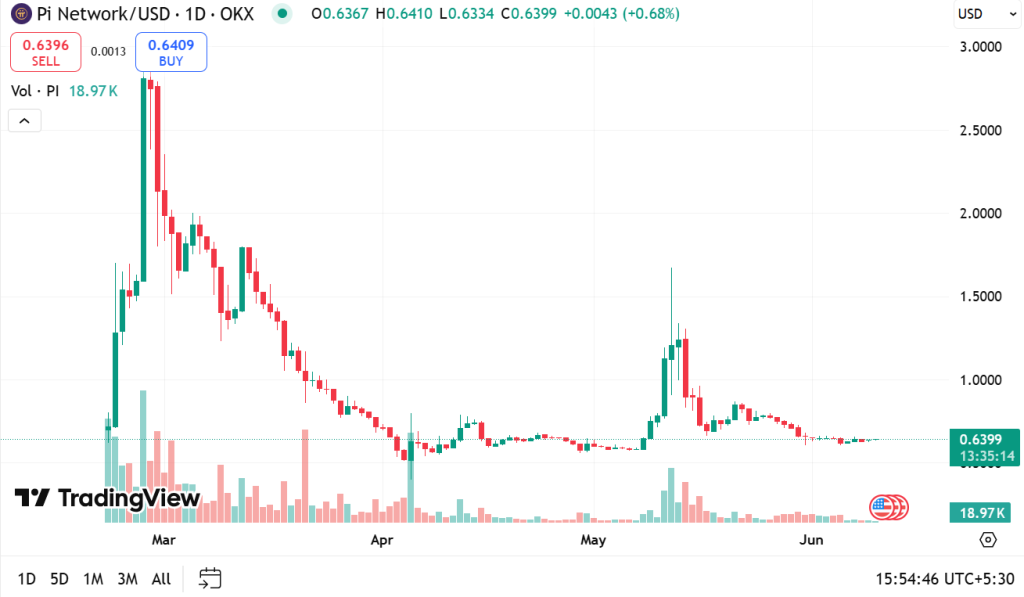
The post Pi Network Price Prediction For 2025 appeared first on Coinpedia Fintech News
Pi Coin is currently trading at $0.6404. It is still stuck below $1 and has dropped 33% over the last month. The Ichimoku Cloud, BBTrend, and EMAs also show no signs of strength yet.
If momentum does not return soon, Pi could see more downside before any recovery begins. The technical indicators show a mixed but slightly bearish picture. Most Oscillators, like RSI, Stochastic, and CCI, are neutral, while the MACD is bearish. But the momentum indicators are showing a buy, which shows early strength. The moving averages are also mostly bearish.
Pi is still under pressure, and it needs a breakout above $0.65–$0.70 to shift the trend in favor of bulls.

Tough Week for PI?
According to CoinCodex, Pi Coin may face a tough week ahead. It is expected to fall the rest of the week up to $0.4848 by June 14. That would be a 23% weekly loss if no bullish catalysts emerge.
It is currently stuck in a bearish trend with the short-term EMA lines sitting below the long-term ones. This is a classic sign of continued downside, and if the bearish support grows, Pi may revisit key support zones. A breakdown there could push it below a critical level for the first time, leading to steeper losses.
On the flip side, if the buying picks up, it could rebound to the next major EMA resistance, sparking a 37% breakout rally. Analyst Moon Jeff, in a recent X post, wrote “Send $PI back to $1.2,” highlighting that this level marks a key resistance for Pi Coin. A breakout above this could be the start of recovery for the coin.
Despite Pi coin’s recent slump, the community remains hopeful ahead of the upcoming Pi Day 2 on June 28. Analyst Dr. Altcoin believes that a major update from the Pi Core Team could spark a price recovery. But if no major news drops, Pi risks sliding below its all-time low of $0.40.


 (@CRYPTOAD00)
(@CRYPTOAD00) 




